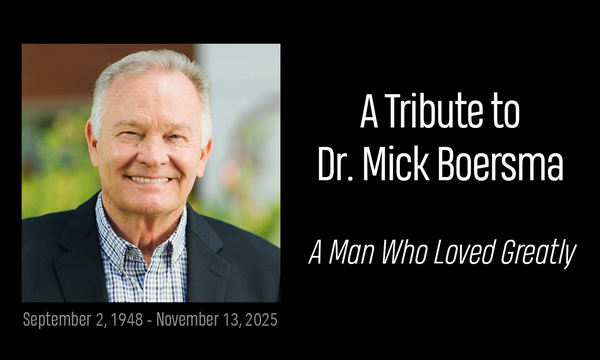Jesus often created controversy, particularly when he associated with sinners. He made it a practice of eating in the company of acknowledged sinners, a practice that was in direct contrast to that of the Pharisees. Why did He practice such an unusual form of hospitality for his day?
There seems to be two major reasons. First, table fellowship was a living metaphor of the banquet depicting the blessings of God’s kingdom. Jesus was demonstrating that the ones the Pharisees rejected were the very ones God accepted. Second, Jesus dined with those who were receptive to His message. It was part of His strategy to win the winnable. Dining with receptive people was an important feature of His ministry as we see in this calling of Matthew the tax collector.
After Jesus had called him, Matthew (Levi) gave a reception for Jesus in his home and "there was a great crowd of tax collectors and other people who were reclining at the table with them" (Lk 5:27-29). The Pharisees and their scribes noticed this and asked, "Why do you eat and drink with the tax collectors and sinners" (30)? To which Jesus gave the following answer: "It is not those who are well who need a physician, but those who are sick. I have not come to call the righteous but sinners to repentance" (31-32). The self-righteous Pharisees, and others like them, were not open to Christ’s words, that is, they were not responsive. So, Jesus naturally was drawn to those who were receptive to Him and His message. In brief He ate with sinners to illustrate the coming kingdom, and because they were receptive to His message.
One day as Jesus was walking with His disciples, He saw a great number of people and felt compassion for them "because they were distressed and dispirited like sheep without a shepherd" (Mt 9:36). Speaking to His disciples, He said, "The harvest is plentiful, but the workers are few. Therefore beseech the Lord of the harvest to send out workers into His harvest" (Mt 9:37-38). As Jesus looked on the distressed and dispirited people, He understood that some of them were ripe for harvest. Some people were not going to follow Him, but many others were ready to be won, if only workers could be found.
Immediately following Christ’s mention of the harvest being plentiful, the point of receptivity is illustrated in chapter ten of the gospel of Matthew. Jesus directs the disciples to go only to those who are receptive to the preaching that the "kingdom of heaven is at hand" (Mt 10:5). He told them, "As you enter the house give it your greeting. If the house is worthy, give it your blessing of peace. But, if it is not worthy, take back your blessing of peace. Whoever does not receive you, nor heed your words, as you go out of that house or that city, shake the dust off your feet" (Mt 10:12-14). In other words, the disciples were to spend their time and energy taking the gospel of the kingdom to those who would listen to them—receptive people.
The apostle Paul was also selective in his choice of places to preach the gospel. Sometimes He was directed supernaturally by the Holy Spirit to pass by certain areas. Paul wanted to preach in the Phrygian and Galatian regions, and in Mysia and Bithynia, but he Holy Spirit did not permit it (Ac 16:8). At least part of the reason, apparently, was that the people of Macedonia were open to the gospel at that time, as illustrated by the conversions of Lydia (14-15) and the jailer (31-40). Later Paul passed through Amphipolis and Apollonia to get to Thessalonica, again apparently due to the receptivity of the people in the cities Paul eventually preached in. The Lord of the harvest has prepared some people to be responsive to the gospel. It is up to us to pray that the Lord will send workers into that harvest field of receptive people, and to carefully target our resources and efforts toward them.
Determining where people are in their receptivity or resistance to the gospel is especially important when deciding what methodology to use for evangelism. When people are very receptive to the gospel, they will respond to many different approaches. At the other extreme, when people are very resistant, they reject about any approach. The people in the middle are very sensitive to what method is being used by a church. And, as you might have guessed, most people are somewhere in the middle, which makes selecting a proper method crucial to biblical church growth.
God honors many methods, but evangelism methods do determine whom we reach for Christ. People who were brought to Christ through an event, such as vacation Bible school, Sunday school, or a revival, tend to think that invitation to events is the best method for evangelism. An invitation approach will work for a target audience that is comfortable with attending church events, but such a method will prove ineffective with a target group that is bothered by going to church events.
The mission of the Church is to the entire world. As such, the gospel is inclusive and broad in its target, and it is at the worldwide, universal Church level that such inclusiveness is most obvious. At the local church level, however, growing congregations realize they are most faithful and fruitful when they have a clearly defined target audience, while being accessible to all people.
Churches that desire to experience biblical church growth ask and answer the following questions: Where are we? Where should we be headed? What steps will take us there? How can we align our ministry to support our vision? How are we doing? However, they also assess the receptivity and resistance of various groups of people in the community to decide what outreach practices will reach them for Christ. What groups of people are most receptive to the gospel in your community? What are you doing to reach them?
 Biola University
Biola University


.jpg)
.jpg)